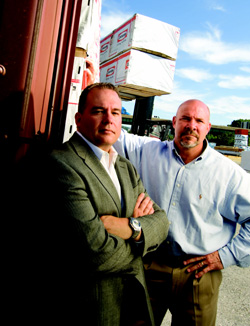The technology gurus at SAP agree that Wolf’s quality-first, technology-second approach was the best one for the firm—and might be for others as well. “They’re a poster child for how you should approach such a topic,” says Roland Schmid, industry principal for home building and construction for SAP Americas. “IT solutions will support your business systems, but IT solutions shouldn’t tell you how to run your business. You have to define your business processes first. IT will help you get there.”
Brown is convinced that Wolf’s success with the system is a result of that considered approach. Conversations with others who had unsuccessfully rolled out an ERP system, he says, revealed their failure stemmed from an inability to deal with the “change, adversity, upheaval” that come with tossing a beloved, comfortable computer system in favor of a far more sophisticated one.
“Our quality system gave us the foundation to address dealing with change,” Brown says. “Because of our quality system, we can recognize when we have a problem, identify the root cause, brainstorm how to overcome it, develop a corrective action, and measure the results. That’s our culture. Having that foundation in place allowed us the opportunity, when challenges came up and things got ugly, to be ready to address them.”
And things did get a bit ugly at first, as employees, steeped in old processes and the comfort of Wolf’s legacy computer system, changed the way they did business. “Implementing an ERP system can be a very painful and arduous process,” says Brown, who notes that during months of training, employees were treated to spa days, fancy dinners, and theater tickets as a reward for the hard work and long hours it took to make the switch to the new system. Brown and Wolf CEO Len Kopec met with every employee in small-group sessions to prepare them “from a psychological and emotional standpoint,” says Brown, that the new system would “challenge your old way of doing things and throw you out of your comfort zone.”
That it did. For two months after the system came online, the organization saw a productivity dip rife with missed delivery dates and uncharacteristic back orders. Then the fog lifted. “We all started to realize that some of the processes that we used to use in our business weren’t the right ones,” says Brown. “As we started to slay some of the sacred cows, we gave up the old processes.”
Coupled with that internal marketing campaign, the system’s hefty price tag and the top-down support for the change also lent to the firm’s success as it adopted business processes and a cutting-edge computer system that were years ahead of the curve for the building materials industry. Kostelich notes that the industry “has typically been behind from a technology standpoint. In 1999, we had some foresight to jump off a cliff and put in a very successful system.”
The system not only saves paperwork and keystrokes—enough to translate into considerably fewer staff members—but it also captures information about Wolf’s customers each time they place an order. The information—what kind of materials they ordered, in which quantities, from which manufacturers, during which months—becomes useful to the divisions of Wolf as they forecast how much material they should order from their own suppliers, based on how much they sold the previous year. SAP’s software adjusts the information to account for unique spikes or dips in ordering so its clients don’t wind up with inventory they can’t sell.
That forecasting ability allows Wolf to pare its inventory in general and to help its clients predict their future needs—in part, so they can preorder commodity products like lumber when prices drop.
This perk, notes Shaffer & Son’s O’Shea, has saved his company between 5 percent and 7 percent per house on lumber and trim packages since it moved its business to The Lumber Yard. “I can build a house in 120 days,” says O’Shea. “If I place a trim order four months in advance, the price might go up” between the order and delivery dates. “We were eating it. Now, I can do a 90-day lock-in because [The Lumber Yard] can look into the future as they’re purchasing.”
Builder Buy-in Initially, admits O’Shea, he feared his relationship with The Lumber Yard might require him to invest tens of thousands of dollars in compatible software, but it cost him only $1,200 to customize his estimating software so he can transmit from it directly to the Wolf system. And, like at Wolf, O’Shea had to “make believers out of” his own employees. “The only challenge I had was to change our way of doing business yesterday to the way we do business today,” he says.

